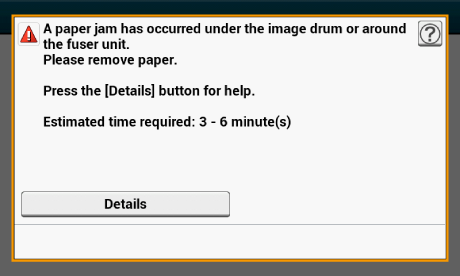
Thanks to a decade of research, our understanding of the megathrust earthquake cycle and rupture process has improved in many aspects. How has this event improved our understanding of the earthquake cycle and rupture processes? The office in which the first author was sitting at his desk at the time of the earthquake (about 180 kilometers west from the epicenter, Tohoku University, Sendai) Credit: Naoki Uchida A maximum slip of about 60 meters occurred near the trench, and the resultant tsunami and shaking caused almost 20,000 deaths in Japan. Over the course of about three minutes, the fault slip propagated to fill out the rupture area of roughly 300 by 200 kilometers, catching up a slip deficit that had built up since as long ago as the 869 A.D. The mainshock rupture initiated close to a zone of slow fault slip with foreshocks on the plate interface in the previous months and a magnitude 7.3 foreshock two days prior. The earthquake was a megathrust event, which occurred along the Japan Trench where the Pacific plate thrusts below Japan. What exactly happened during the Tohoku-oki earthquake? However, the characterization of the ancient tsunami sources and utilization of these results in the evaluation of earthquake hazard was slow. Since the 1980s, geological investigations of coastal tsunami sand deposits provided clear evidence of large tsunamigenic earthquakes that appeared to be substantially larger than instrumentally recorded events. However, the resolution of these measurements was poor in the offshore area, and various ways to compensate the apparent slip deficit, including slow earthquakes, were considered to explain the discrepancies between seismologic and geodetic estimates of megathrust coupling and earthquake potential. Land-based geodetic observations collected in the decades prior to the mainshock showed strong interplate locking offshore Tohoku. However, the records of the past 100 years did not directly address events with much longer recurrence intervals. The instrumental records indicated a heterogeneous distribution of up to magnitude 8 earthquakes and repeated slips in the subduction zone. Prior to the Tohoku-oki earthquake, what were the gaps in our understanding of megathrust earthquakes?ĭespite many studies of the Japan Trench, there was no consensus on the possibility of magnitude 9 earthquakes before the Tohoku-oki earthquake. Two days of aftershock recordings about a month (28 April) after the mainshock at Tono earthquake observatory (Tohoku University) in Iwate prefecture. Megathrusts also have the potential to produce devastating tsunamis because of the large ocean bottom vertical movement occurring during the earthquake.

Megathrust earthquake sources are usually located beneath the sea, which makes it difficult to make detailed observations based on seismic, geodetic, and geologic measurements. The world’s greatest earthquakes occur on megathrusts.

Megathrust earthquake sources are usually located beneath the sea, which makes it difficult to make detailed observations.

Due to the unstoppable relative motion of the plates, stress accumulates in the areas where the interface of the two plates is locked and is eventually released in megathrust earthquakes.

Megathrust ruptures involve thrusting of subducting oceanic plates (here the Pacific plate) under the overlying plates (here Japan as part of the North America or Okhotsk plate). Megathrust earthquakes are plate boundary ruptures that occur on the contact area of two converging tectonic plates in subduction zones. We asked the authors to explain the significance of this earthquake and lessons learned from it. A recent article published in Reviews of Geophysics gives an overview of a decade of research on the Tohoku-oki earthquake. Research results have provided several surprises to the earthquake research community, including the earthquake’s unexpectedly large slip near the trench, the recognition of significant precursory seismic and geodetic anomalies, and the widespread and enduring changes in deformation rates and seismicity across Japan since the event. It occurred in one of the best monitored areas in the world and has been extensively studied in the past decade. This was the biggest recorded earthquake in Japan and one of the five largest earthquakes in the world since the beginning of instrumental observations. On 11 March 2011, a 9 to 9.1 magnitude earthquake occurred off the shore of Tohoku, Japan.


 0 kommentar(er)
0 kommentar(er)
